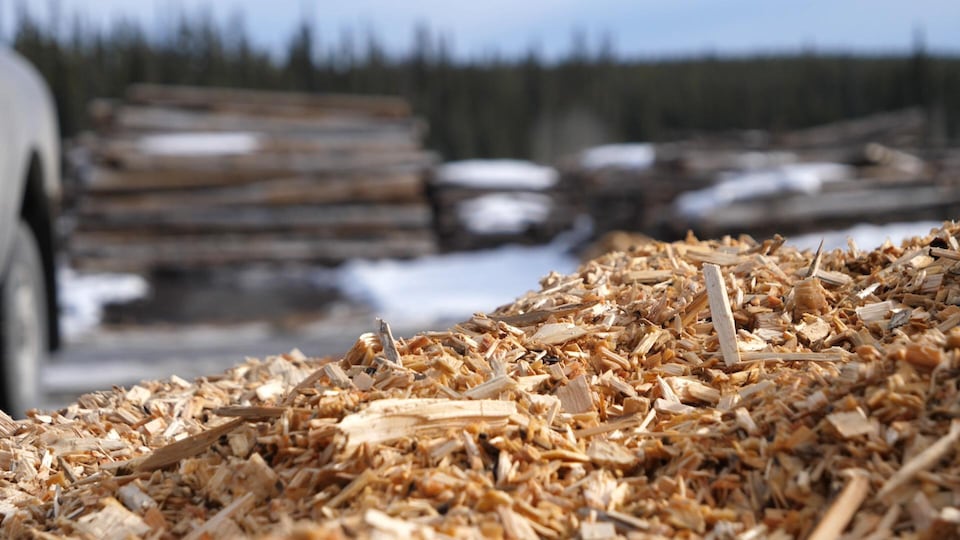Previously, the MRC sent its wood to the company Résolu, in Gatineau, which used it as biofuel, but ended this agreement because the Ministry of the Environment did not see the gases in a good light. greenhouse effect that this engendered.
It is no longer thinkable to say that we load trucks with chips and send them to Gatineau to burn them. Already just transport, it costs a fortune and it is polluting. And in addition to burn it at the end, it’s polluting
says Marco Veilleux, director of the environment department at the MRC de la Vallée-de-l’Or.
The MRC de la Vallée-de-l’Or landfill site has accumulated up to 11,000 tonnes of wood. Clean wood is used as a structuring agent in the compost, but this is far from exhausting the entire quantity of wood at the site.
When wood is buried, it releases biogas, including methane, a greenhouse gas considered 25 times more powerful than CO2 in terms of global warming.
Marco Veilleux reports that the MRC has been looking for solutions to upgrade wood for 10 years. In the meantime, we have found an alternative, but it is far from ideal, according to him.
What we do now is use it as a cover material at the landfill. It is made into shavings and the shavings are used as covering material. They are valued internally, but only a small portion. It’s a temporary fix, it’s a little band-aid and that’s it
emphasizes Mr. Veilleux.
It is much easier to find outlets for wood when it is sorted into different categories in ecocentres. This is underlined by Mario Laquerre, rudologist and teacher at the University Center for Training in Environment and Sustainable Development (CUFE) at the University of Sherbrooke.
The problem is that we tend to amalgamate all this wood in a big pile, and from the moment that there are fractions that are less interesting for recyclers or processors, the world will not want not of that stuff
explains Mr. Laquerre.
” Leitmotif number 1 is to see if we are able to separate the wood into different fractions, and once it is separated, it is much easier to find outlets. »
On the other hand, the wood that citizens, businesses or businesses bring to the Vallée-de-l’Or ecocentre is not separated in this way, because it would require sorting center equipment. We do a summary sorting, setting aside the large pieces.
We are installed so that citizens can sort the clean wood from the unclean one. Unfortunately, this is not always done. The big problem is that all treated, painted, glued wood contains contaminants that cannot pass through our recovery process so that we can use it as a structuring agent in composting.
reports Mr. Veilleux.
Municipal wood: less popular
Some companies, such as paper mills, are interested in buying untreated wood waste.
On the other hand, municipal wood is in competition with that of the forest industry, which is very important in Abitibi-Témiscamingue.
If she [une papetière] is able to have access to sawmill wood that is beautiful, homogeneous, whose chips are equal, it will prefer that
explains Mario Laquerre, rudologist and teacher at the University Center for Training in Environment and Sustainable Development (CUFE) at the University of Sherbrooke.
When the forest industry is not doing as well, if I no longer make two-by-fours, I have no more residues, then the paper mills are more interested in going to get urban wood that has been chipped
adds Mario Laquerre.
Another issue facing the region when it comes to finding a second life for wood: distance.
There are still significant transport costs because it is generally quite far from the markets
emphasizes Mario Laquerre.
Residues generated by the construction, renovation and demolition sector represented 28% of the materials sent to landfill in 2019, according to Recyc-Québec.
Reference-ici.radio-canada.ca
